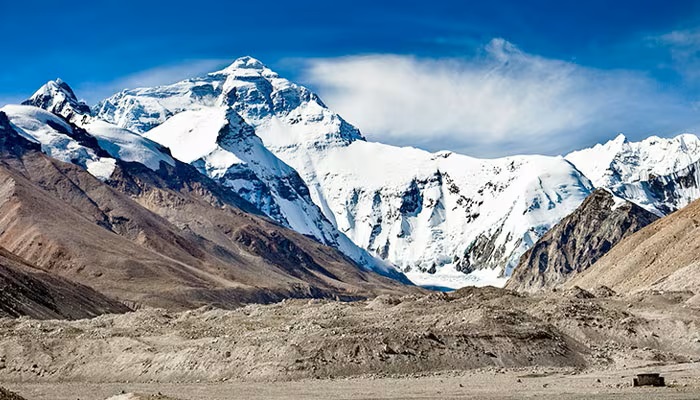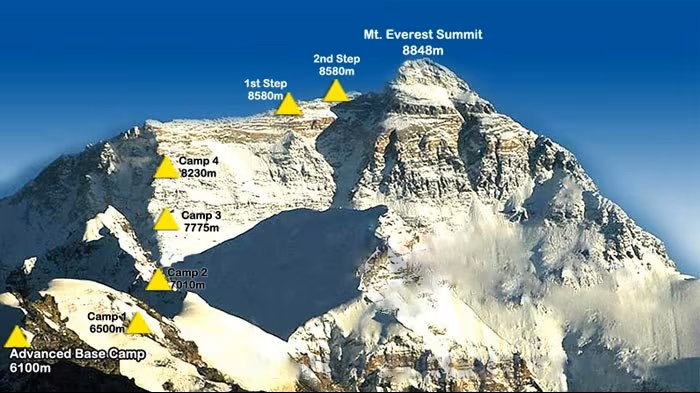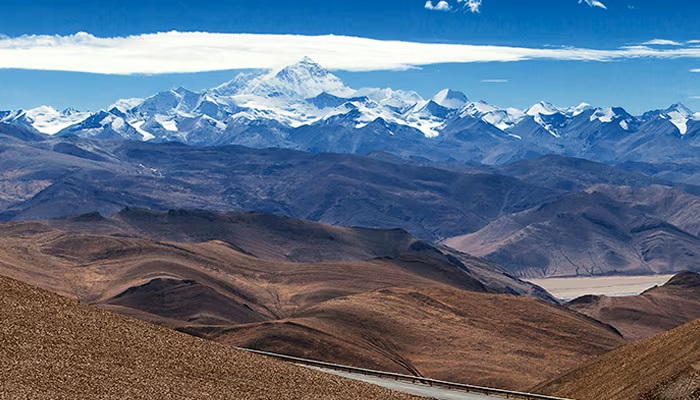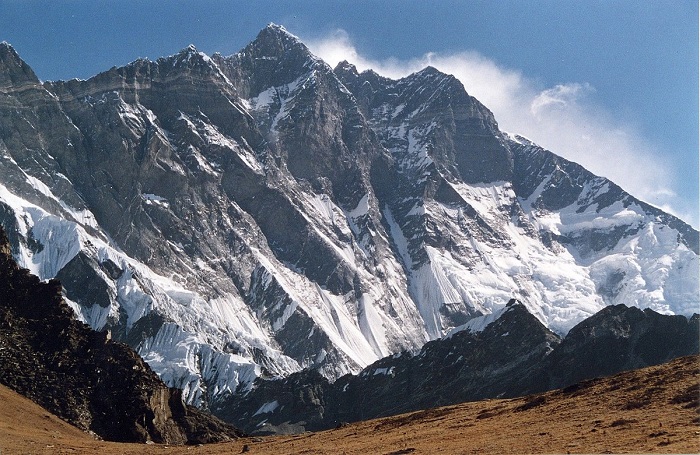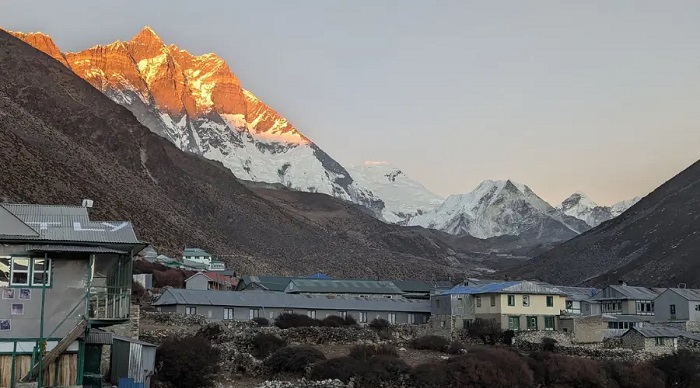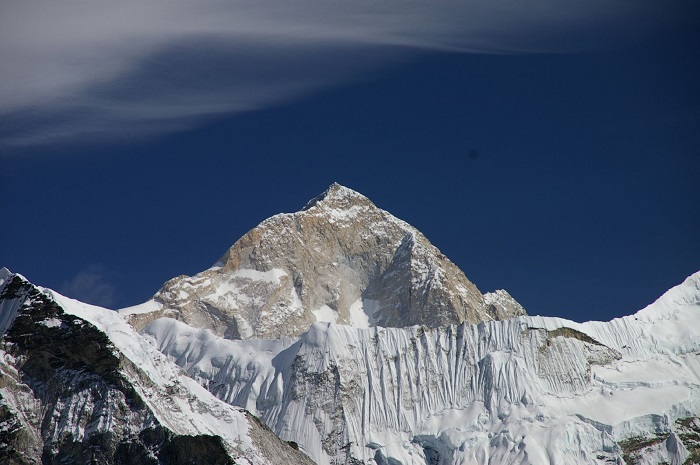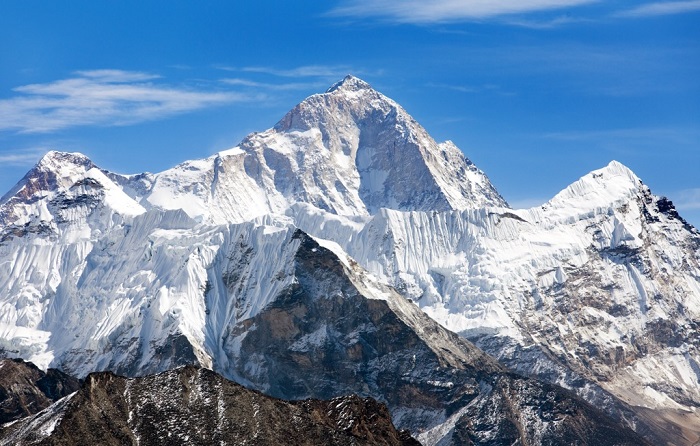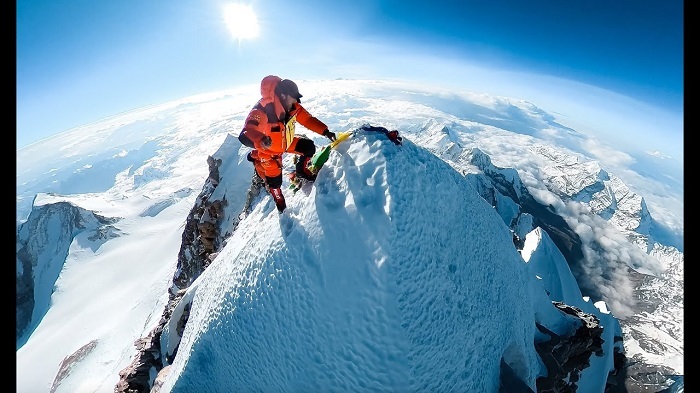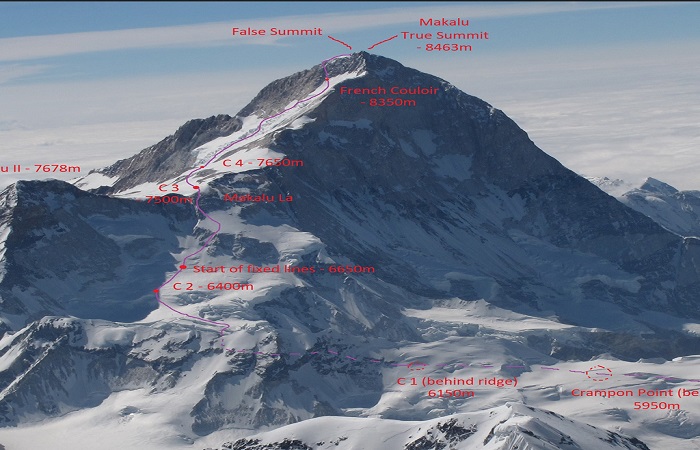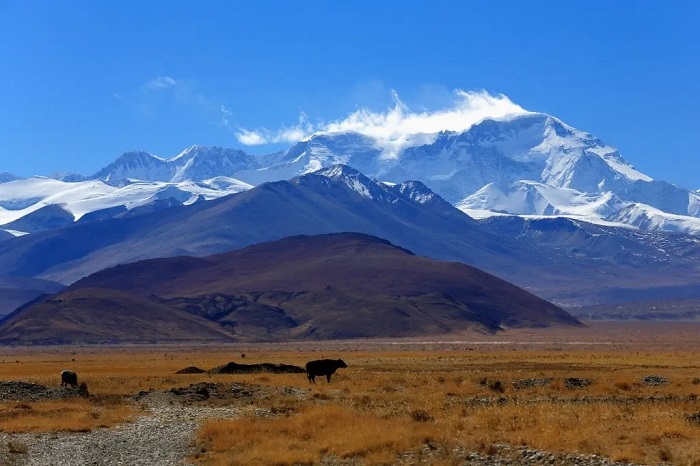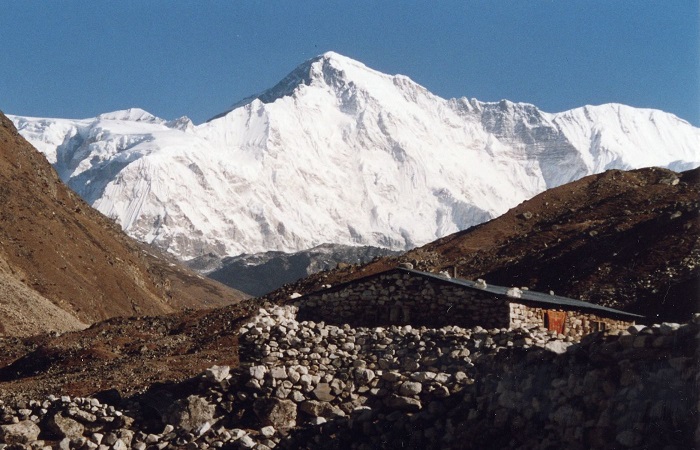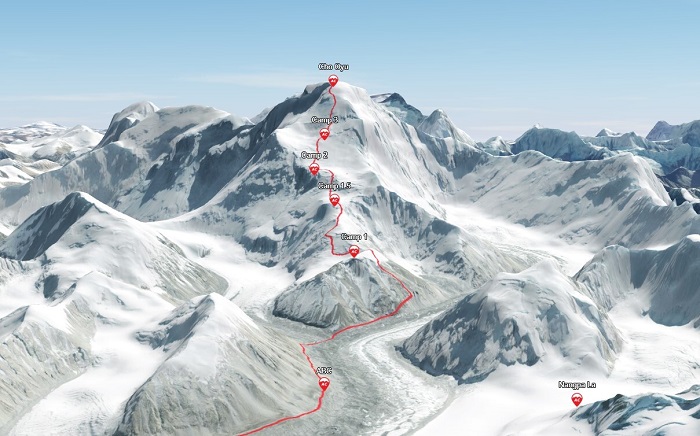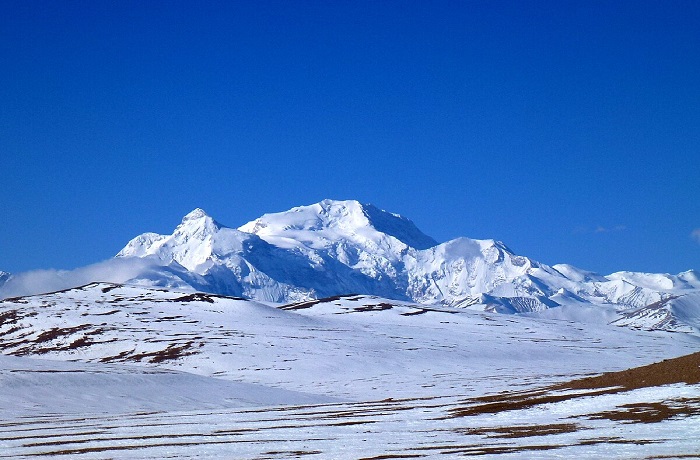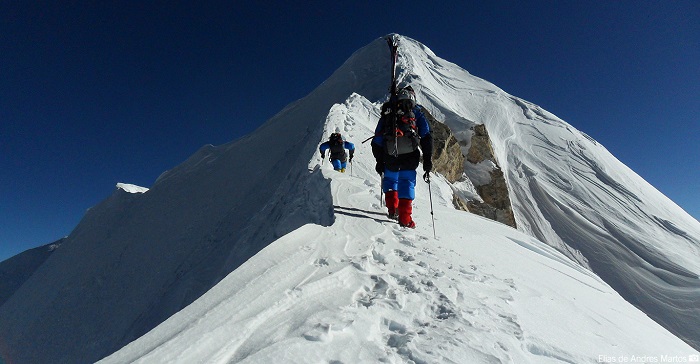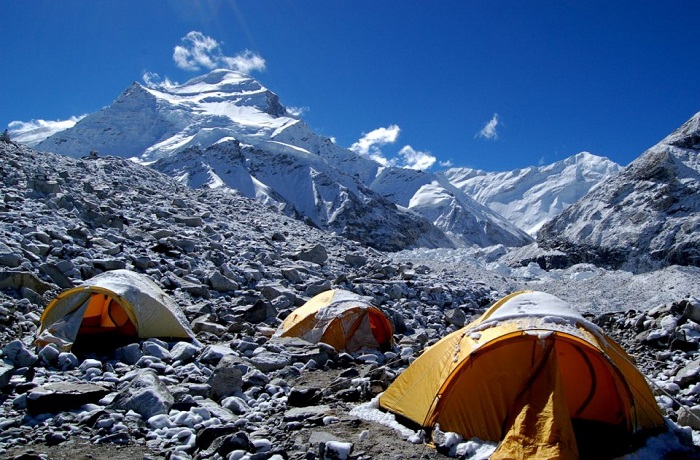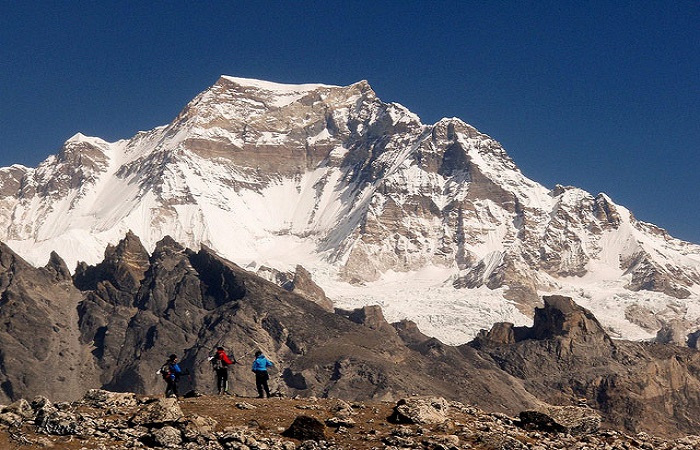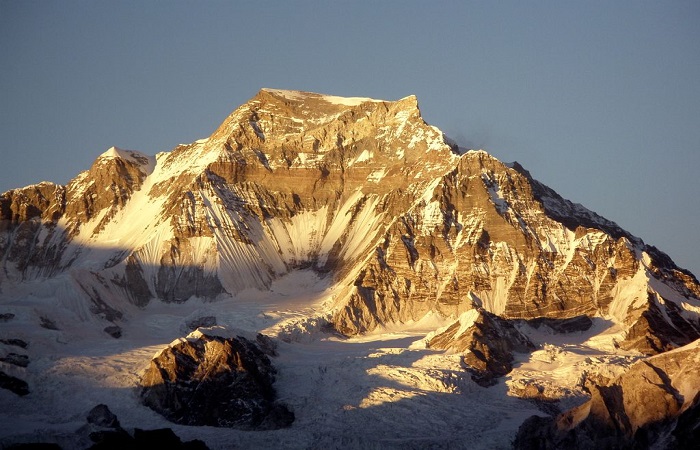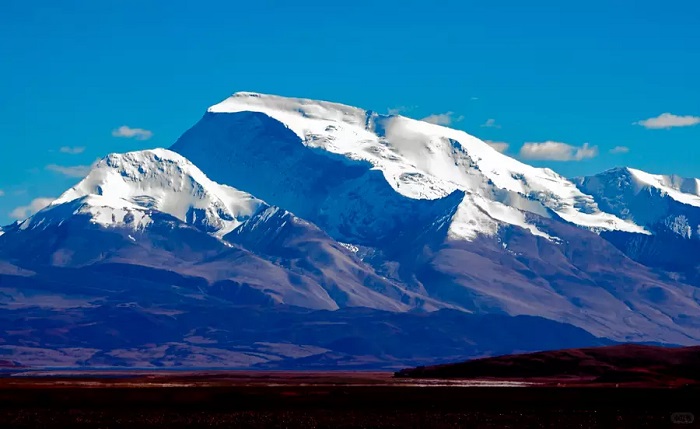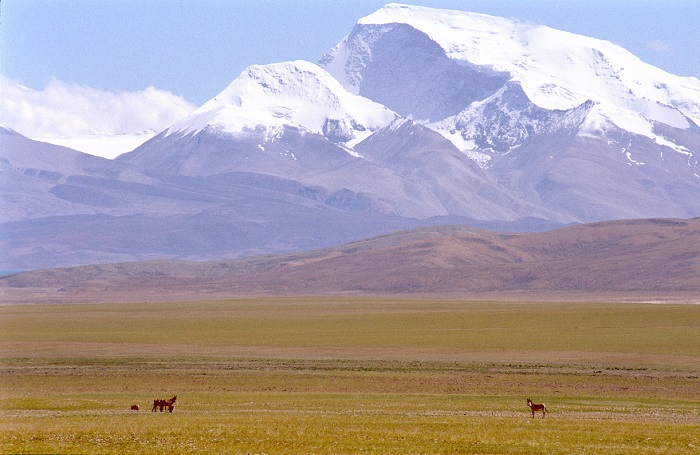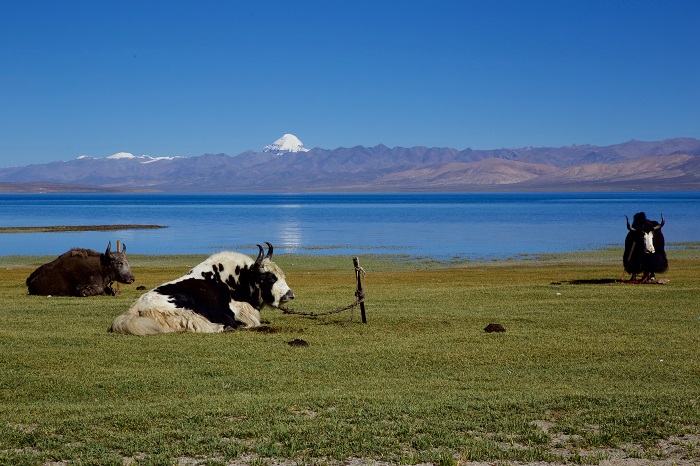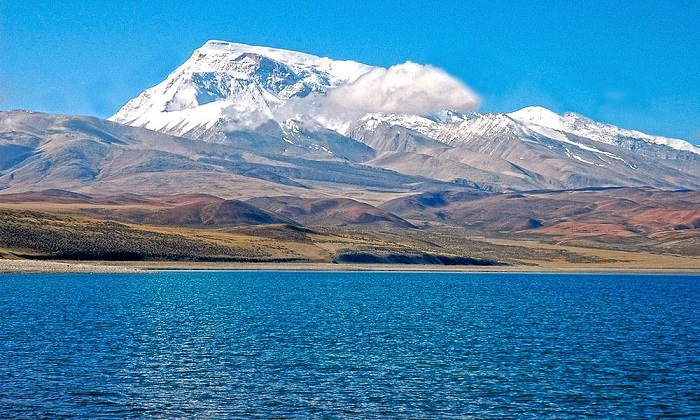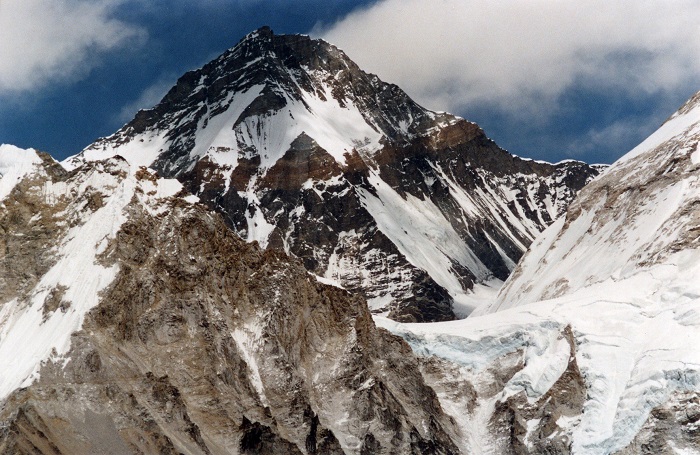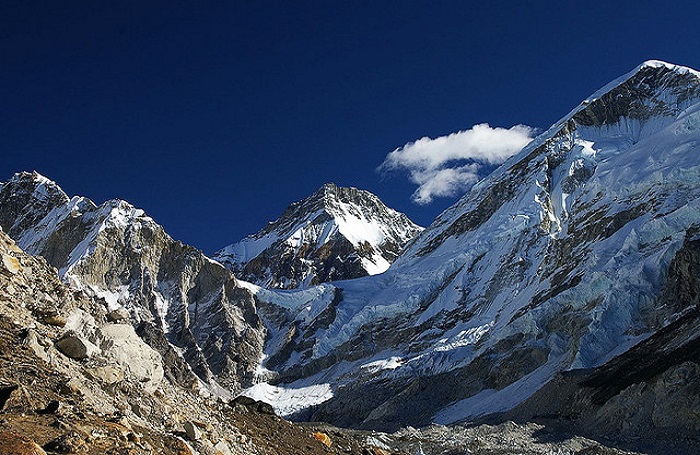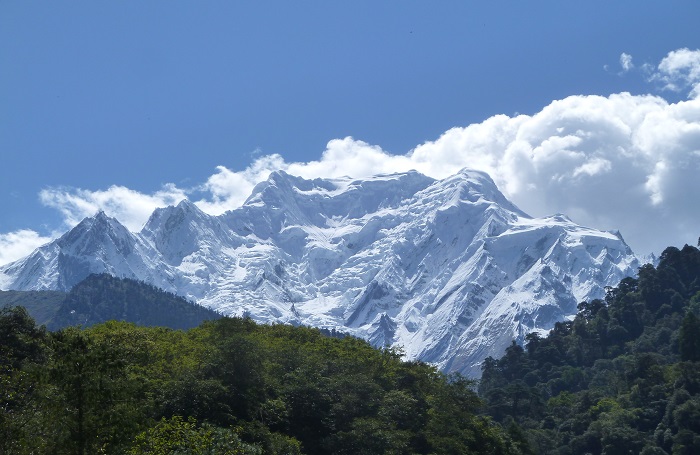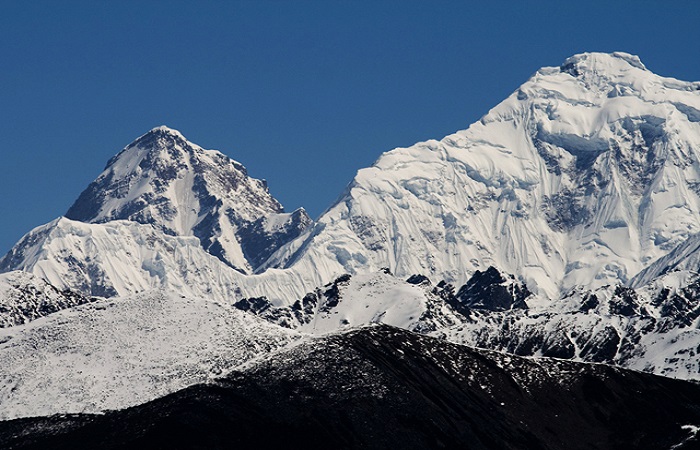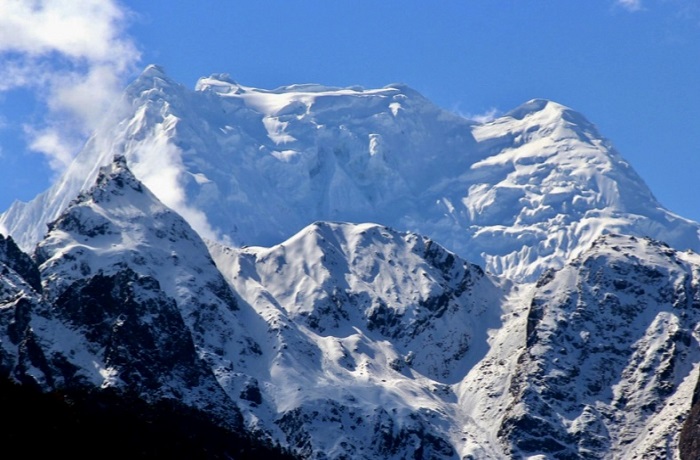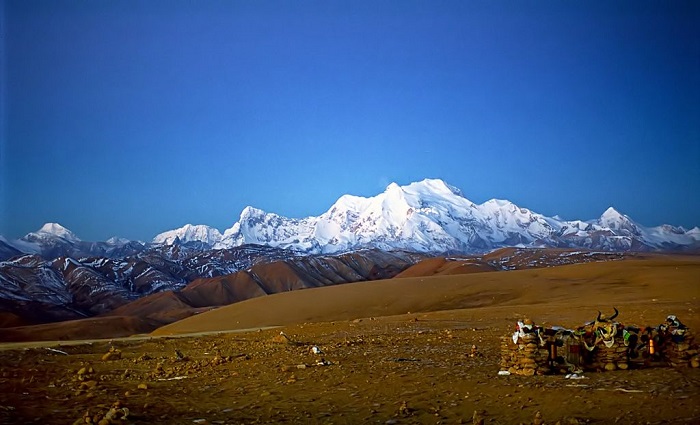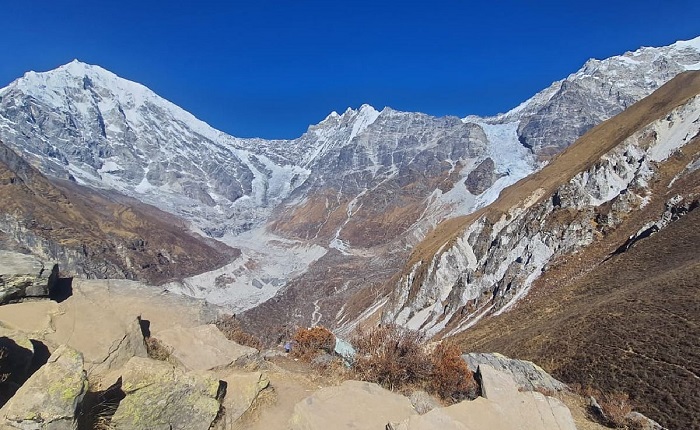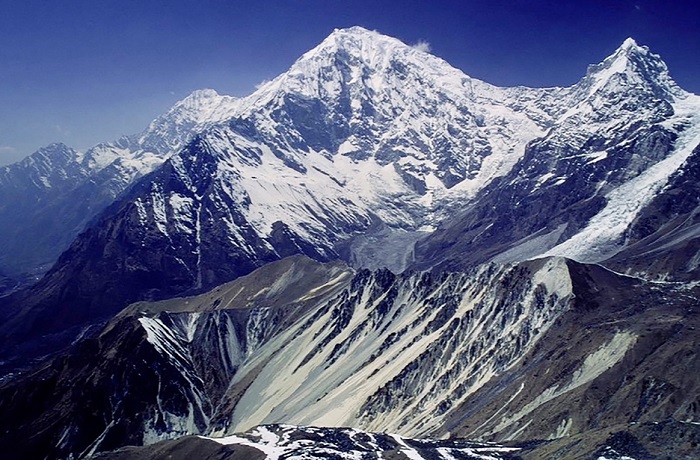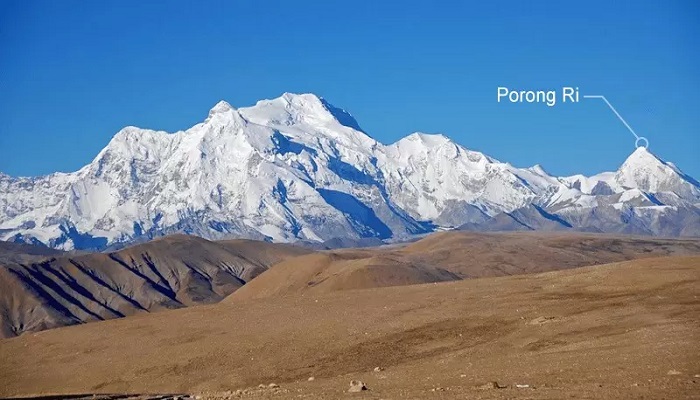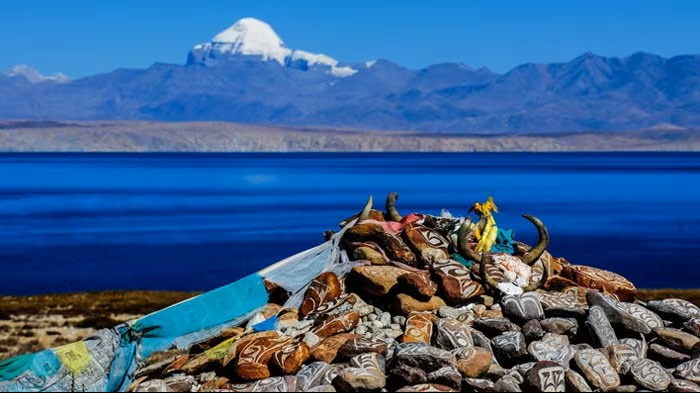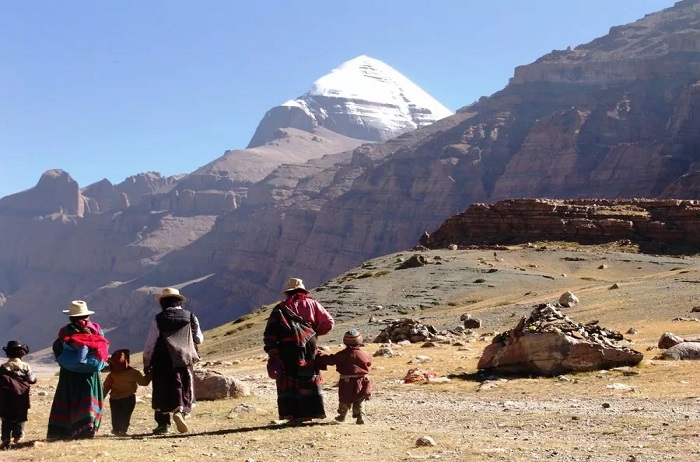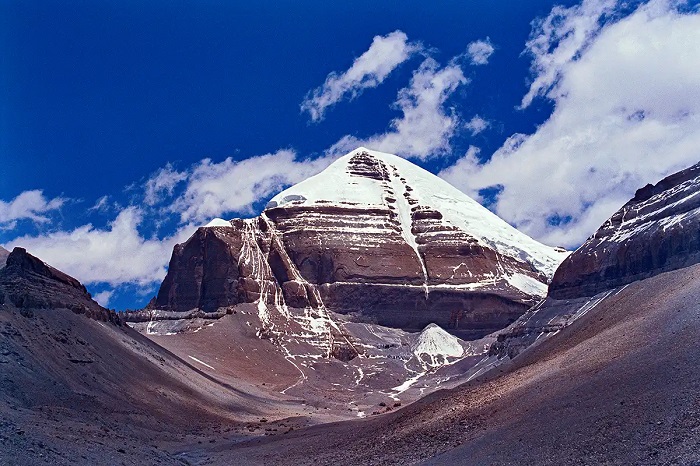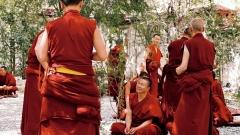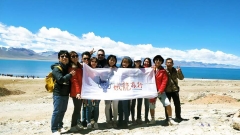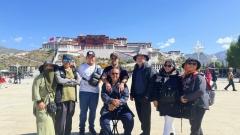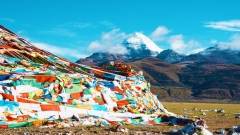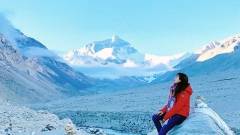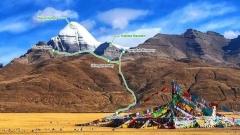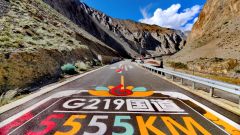The Tibetan Plateau is often called the “Roof of the World” for very good reason. Stretching across miles of high-altitude terrain, its mountain ranges hold some of the most dramatic peaks on the planet. For the international traveller seeking both wonder and challenge, Tibet’s mountains offer an unforgettable blend of raw nature, deep culture and remote access.
1. Majestic Mount Everest – The Highest Mountain on Earth
When one thinks of the highest peaks in Tibet (and indeed the world), Mount Everest immediately comes to mind. Known in Tibetan as Chomolungma (“Goddess Mother of the Earth”) and in Nepali as Sagarmāthā (“forehead in the sky”), Everest rises to about 8,848 meters (29,029 feet) above sea level.
Straddling the border between Tibet and Nepal, Everest sits within the great divide that separates the Indian subcontinent from the Tibetan Plateau. What this means for the traveller: you have two very different base-camp approaches. On the Tibetan (north) side you’ll find a road access point to the base camp region, making it far more accessible for those who want to visit without full mountaineering gear; on the Nepal side you typically need to trek for a week or more just to reach the base camp.
If your goal is a sightseeing tour rather than a full summit climb (which only highly-trained teams attempt), the Tibetan side is your best bet. Starting in the capital of Tibet, Lhasa, you would travel along the Sino-Nepal highway via Gyantse and Shigatse, then onward to Shegar. After some 670 kilometres (about two days’ drive from Lhasa) you’ll reach the northern foothills of Everest (including the historic Rongbuk Monastery at around 5,154 m altitude). From there one can prepare for the final stretch to the Base Camp viewpoints.
For many tourists, simply arriving at the region, breathing the high-altitude air, seeing the monastic culture and views of Everest’s summit ridge is more than enough. The feeling of standing in the shadow of the highest mountain on earth—even at its base—is one of awe and reverence.
2. Lhotse – The Fourth-Highest Peak on Earth
Next door to Everest (literally) lies Lhotse, the world’s fourth-highest mountain, rising to approximately 8,516 meters (27,940 ft). For visitors to the region it presents a quietly giant companion to Everest, often less celebrated but no less imposing.
Its Tibetan name literally means “South Peak,” and indeed it lies just three kilometres south of Everest. The main summit was first climbed on May 18, 1956 by a Swiss expedition. For visitors seeking a spectacular viewpoint rather than ascent, the best vantage point on the Tibetan side is around the Geu La Pass, on a very clear day. However, trekking into the Kangshung Valley on the eastern side (near Khrata) provides dramatic, sweeping vistas of Lhotse’s ridges and faces—but this is a far more challenging journey, suitable for seasoned trekkers.
Access is broadly similar to Everest: from Lhasa via Shegar and then onward toward Rongbuk. The mindset for a visit: Lhotse may not dominate conversation the way Everest does, but for mountain lovers it offers an exceptional vista in the company of its more famous neighbour.
3. Makalu – The Fifth-Highest Mountain in the World
Rising to ~8,485 meters (27,838 ft), Makalu sits within the Mahalangur Himal sub-range, about 19 km from Everest. From afar it stands out with the striking, sharply pyramid-like form of its four faces.
Bordering Tibet and Nepal, Makalu is renowned among mountaineers for its technical difficulty—knife-edged ridges, steep rock and ice pitches—and thus fewer climbers dare to scale it. But for tourists who simply want to behold its beauty from below, your best bet once again is the northern (Tibet) approach: starting in Lhasa, travel toward Shegar, then westward via Yupa town, follow the Gamma Tsangpo river valley and arrive at Shajitang Base Camp (3,600 m). The final leg is remote and rough, but for the ambitious traveller it’s a thrilling side-trip off the beaten path.
One thing that stands out about Makalu is its slightly isolated status—fewer tourists, fewer buses, and a stronger sense of wilderness. If you have the time and the adventurous spirit, visiting the Makalu region adds a rare dimension to a Tibet mountain tour.
4. Cho Oyu – The Sixth-Highest Peak on Earth
At approximately 8,201 meters (26,906 ft), Cho Oyu is the world’s sixth-highest mountain and often dubbed the most “accessible” of the eight-thousanders (peaks above 8,000 m). The Tibetan name means “Turquoise Goddess,” and the mountain sits about 20 km west of Everest.
For international tourists, accessing the Cho Oyu base region is relatively straightforward: one drives about 718 km from Lhasa via Shigatse and Latse to Tingri (taking roughly two days), then south about 40 km to the base-camp area at around 4,959 m. The terrain is spectacular and gives excellent photographic opportunities without requiring advanced mountaineering.
As a visitor, if you’re attracted to high-altitude vistas and dramatic snow peaks without the technical climbing demands, Cho Oyu is an excellent choice. It combines grandeur with relative logistical manageability.
5. Shishapangma – The Only Eight-Thousander Entirely Within Tibet
Rising to approximately 8,027 meters (26,335 ft), Shishapangma holds the distinctive honor of being the only eight-thousander whose summit lies entirely within Tibet’s political boundaries. That fact alone gives it a special appeal.
Its summits actually consist of two peaks (8,013 m and 8,027 m) and it was first climbed by a Chinese expedition in 1964. For the traveller, it is less well-trodden than the Everest region and offers a sense of remoteness and un-touristed mountain splendour. Access involves driving from Lhasa through Gyantse, Shigatse to Shegar/New Tingri (circa 670 km), then further west and south to reach the north foot at around 5,114 m altitude.
Because of the lower number of visitors, a journey to Shishapangma can provide that special feeling of adventure and seclusion. If your travel style leans toward wilderness, this mountain region might captivate you.
6. Gyachung Kang – The Highest Mountain Not in the Top 14
Located on the border of Tibet and Nepal, in the same Mahalangur Himal region as Everest and Lhotse, Gyachung Kang rises to around 7,952 meters (26,089 ft). Although it falls short of the eight-thousander mark, it remains the highest peak outside the top 14.
For travellers, glimpsing Gyachung Kang is often overlooked, yet it is visually commanding. One of the best vantage points on the Tibetan side is again the Geu La Pass area en route to Everest Base Camp. Because it receives fewer visitors than its taller neighbours, Gyachung Kang offers a quieter mountain experience. If you’re doing the standard Everest region trek or road tour, keep your eyes open: you might catch this strong peak rising behind your horizon.
7. Naimonanyi (Gurla Mandhata) – A Sacred Mountain Near Lake Manasarovar
Approaching the still-mystical western reaches of Tibet, we find Naimonanyi (also known as Gurla Mandhata) at around 7,694 meters and ranked about the 34th highest mountain in the world. Situated in Ngari Prefecture (Burang County), near the India-Nepal border region and the sacred Lake Manasarovar, the mountain embodies both grandeur and pilgrimage atmosphere.
The first recorded ascent was in 1985 via a north-side route led by Katsutoshi Hirabayashi. For tourists, combining the visit to Lake Manasarovar (a major pilgrimage and scenic destination) with views of Naimonanyi creates a deeply contemplative mountain journey. If you have time to venture beyond the usual circuit, the Ngari region’s remote highways and high-altitude landscapes elevate the experience.
8. Changtse – North of Everest, Fully in Tibet
Just north of Everest lies Changtse, rising to approximately 7,543 meters and fully within the Tibetan region. The North Col linking Everest and Changtse gives it its significance. While the first ascent in 1982 by a Dutch team lacks formal permit recognition, the region remains quiet, high-altitude, and understated in the shadows of Everest.
For your itinerary: if you are visiting the Everest region and have an earlier start or a slightly longer tour, you may spot Changtse from vantage points not crowded with tourists. Its quieter presence offers a more solitary mountain feeling.
9. Gyala Peri – Eastern Himalayas’ Rising Edge
Moving toward the eastern end of the Himalayas we encounter Gyala Peri, ranked about 84th highest in the world at roughly 7,294 meters (23,930 ft). It lies just beyond the entry to the vast Yarlung Tsangpo Gorge. First climbed in 1986 via the south ridge by a Japanese expedition, Gyala Peri remains grand yet remote.
Travellers who venture into eastern Tibet or combine gorge-trekking with high-mountain viewpoints will find Gyala Peri a worthy destination. It’s less accessible and sees fewer visitors—but that is part of the appeal.
10. Porong Ri – A Hidden Giant Near the Tibet-Nepal Border
Rounding out our list is Porong Ri at roughly 7,292 meters (23,924 ft), ranked about 86th highest worldwide. Located in the Langtang region on the Tibet-Nepal border, it was first climbed in 1982 by a Japanese expedition team.
Because it lies near the less-travelled border region, Porong Ri makes an excellent option if you already have experience in high-altitude travelling and want to bracket your journey with a lesser-known giant. The sense of remoteness—and being among few fellow travellers—can make it especially memorable.
11. Sacred Mount Kailash – Height Is Not Everything
While none of the previous mountains falls below the 7,200 meter mark, in the west of Tibet lies Mount Kailash—not among the top-highest peaks globally (about 6,638 m or 21,778 ft) yet often considered the most spiritually powerful mountain in Tibet. It’s located near Lake Manasarovar and Lake Rakshastal, in the Gangtise mountain range.
Mount Kailash holds sacred status for four religions: Bön (Tibet’s native spiritual tradition), Hinduism (where it is revered as Lord Shiva’s abode), Jainism (as the place where a Tirthankara attained moksha), and Buddhism (where it is associated with Mount Meru). Pilgrims perform the “kora”—a circumambulation around the mountain—starting from the small town of Darchen. This 52-km trek typically takes three days at high altitude and offers the clearest sense of sacred landscape in Tibet.
Access: While flights into the Ngari Gunsa Airport exist, most travellers opt for a road trip of about four days (some 1,500 km) via China’s national highways (318 and 219). Because of the sacred status and remote location, the mood here is very different from base-camp tourist bustle—it’s more reflective, atmospheric and culturally immersive.
For international tourists who want the mountain experience and a spiritual dimension, Mount Kailash is unmatched.
12. Other Towering Mountains Worth Mentioning
Beyond the list above there are other high mountains in Tibet that deserve attention:
- Noiji Kansang (~7,206 m)
- Nyainqentanglha Feng (~7,162 m)
- Loinbo Kangri (~7,095 m)
- Ulugh Muztagh (~6,973 m)
- Kaluxung (~6,674 m)
- Yarlashampo (~6,635 m)
While they may not be as “headline-grabbing” as Everest or Makalu, for avid mountain aficionados or travellers who relish off-beat vistas, these peaks open exciting terrain and more solitude.
Practical Considerations for Touring Tibet’s Mountains
Altitude & Acclimatisation
High altitude is the biggest challenge for many visitors. Many of the base camps and vantage points lie above 4,000 m (13,000 ft) and can go well beyond 5,000 m. It’s essential to allow your body to acclimatise slowly—so take rest days, stay hydrated, minimise exertion on day one or two, and listen to your body.
Best Time to Visit
Tibet’s climate is heavily influenced by its high-altitude plateau status: daily temperature fluctuations are large, weather can change quickly, and the thin air means clarity can vary. Generally, late spring (May) and early autumn (September) offer clearer skies and milder weather. For mountains like Everest and Makalu, aim for months when snow conditions are stable and visibility is good.
Permits and Travel Formalities
Travelling to Tibet frequently requires special permits (beyond a standard Chinese visa for tourists). Many regions are accessible only via organised tours with local guides and licensed vehicles. Especially when venturing toward border-mountains or lesser-visited regions, you will need to coordinate through a trusted local agency.
Logistics & Transport
Most major mountain-region tours start from Lhasa, which has by now improved road, rail and air links. For example, the northern Everest region is accessible by road via Shigatse and Shegar. For more remote peaks (Ngari region, eastern Tibet) expect long drives, rough roads, high passes and fewer facilities. Pack accordingly.
Cultural & Environmental Respect
Many of Tibet’s mountains are sacred, parts of living religious landscapes. Always travel with respect—for local belief systems, for mountain ecology, for fragile high-altitude environments. Stick to marked paths, minimise waste, and choose local-friendly options when possible.
Choose the Right Tour Style
If you’re comfortable with trekking, remote roads and raw nature—great. If you prefer easier access, more comfort, and a strong cultural component, choose tours that include base-camp viewpoints accessible by vehicle rather than deep mountaineering. Your strategy should match your appetite for adventure.
Why the Tibetan Plateau Hosts So Many High Mountains
It is a geological wonder that no other place in the world packs so many of the highest mountains into one region as the Tibetan Plateau does. Here are a few reasons:
- The uplift of the Tibetan Plateau results from the collision of the Indian Plate with the Eurasian Plate, giving rise to extremely high mountain ranges.
- Several major ranges run along the plateau: the Himalayas, the Karakoram–Tanggula Mountains, Gangtise–Nyenchen Tanglha, the Kunlun Range and the Hengduan Range.
- In fact, you’ll find 26 of the planet’s top 100 highest mountains clustered together on or around the Tibetan Plateau.
This concentration of towering peaks, dramatic geomorphology and high-altitude terrain makes Tibet uniquely spectacular for mountain-loving travellers.
How to Choose Your Tibet Mountain-Tour Route as an International Traveller
When planning a trip to view Tibet’s mountains, you’ll want to match your itinerary to your interests and physical readiness. Here’s how to think about it:
- For general sightseeing & high-altitude views: Base camp road-accessible destinations, like the northern side of Everest or Cho Oyu, give you the high mountain thrill without extreme trekking.
- For mountain lovers wanting lesser-known peaks: Consider regions like Shishapangma, Naimonanyi, Gyala Peri or Porong Ri—less visited, more remote, but spectacular.
- For spiritual or pilgrimage focus: Mount Kailash and the Lake Manasarovar region offer something quite different—sacred landscape, cultural depth and tranquil mountain majesty.
- For adventure trekkers / mountaineers: Some of these summits (Makalu, Lhotse, remote ridges) are outright expedition territory. If you’re up for it, the region is yours—but plan accordingly.
- For photo enthusiasts: Early morning light, large pas, glaciated ridges and fewer crowds often yield the best shots. Remote access gives you solitude but brings complexity.
No matter which path you choose, ensure your gear, acclimatisation plan and logistics match the altitude and remoteness of your destination.
Why International Tourists Should Choose Tibet Now
- The landscapes are unparalleled: The cluster of world-highest peaks, the massive glaciers, alpine meadows, high-pas and remote valleys—all within relatively accessible range.
- Cultural depth: Tibetan Buddhism, nomadic yak herding culture, snow-covered monasteries, sacred mountains and pilgrimage routes add layers beyond pure mountain scenery.
- Accessibility improving: Roads, rail and airports are increasingly developed, making some of these mountain regions reachable without full expedition gear.
- Unique experience: Few places in the world allow a non-mountaineer to feel close to 8,000 m-plus peaks, high altitude wilderness and ancient spiritual traditions all in one trip.
- Tailored tours: Leading agencies specialise in international-friendly packages including bilingual guides, oxygen-support logistics, organised transport and permit handling.
For the international traveller wanting to combine mountain awe, cultural richness and manageable logistics, Tibet offers a winning mix.
In summary, if you are drawn to towering landscapes, spiritual hillside traditions and high-altitude travel with an international-friendly framework, the mountains of Tibet must be on your radar.
When planning your tour, look for operators who specialise in Tibet and understand the altitude, permit and logistic challenges. One such agency is China Dragon Travel, which has over two decades of experience organising group and private tours in Tibet, with zero-shopping-stop guarantees, bilingual service and tailored itineraries. They offer packages ranging from compact 8-day tours (including Lhasa and Everest’s base region) to expansive 15-day journeys into Ngari and Mount Kailash territory.



